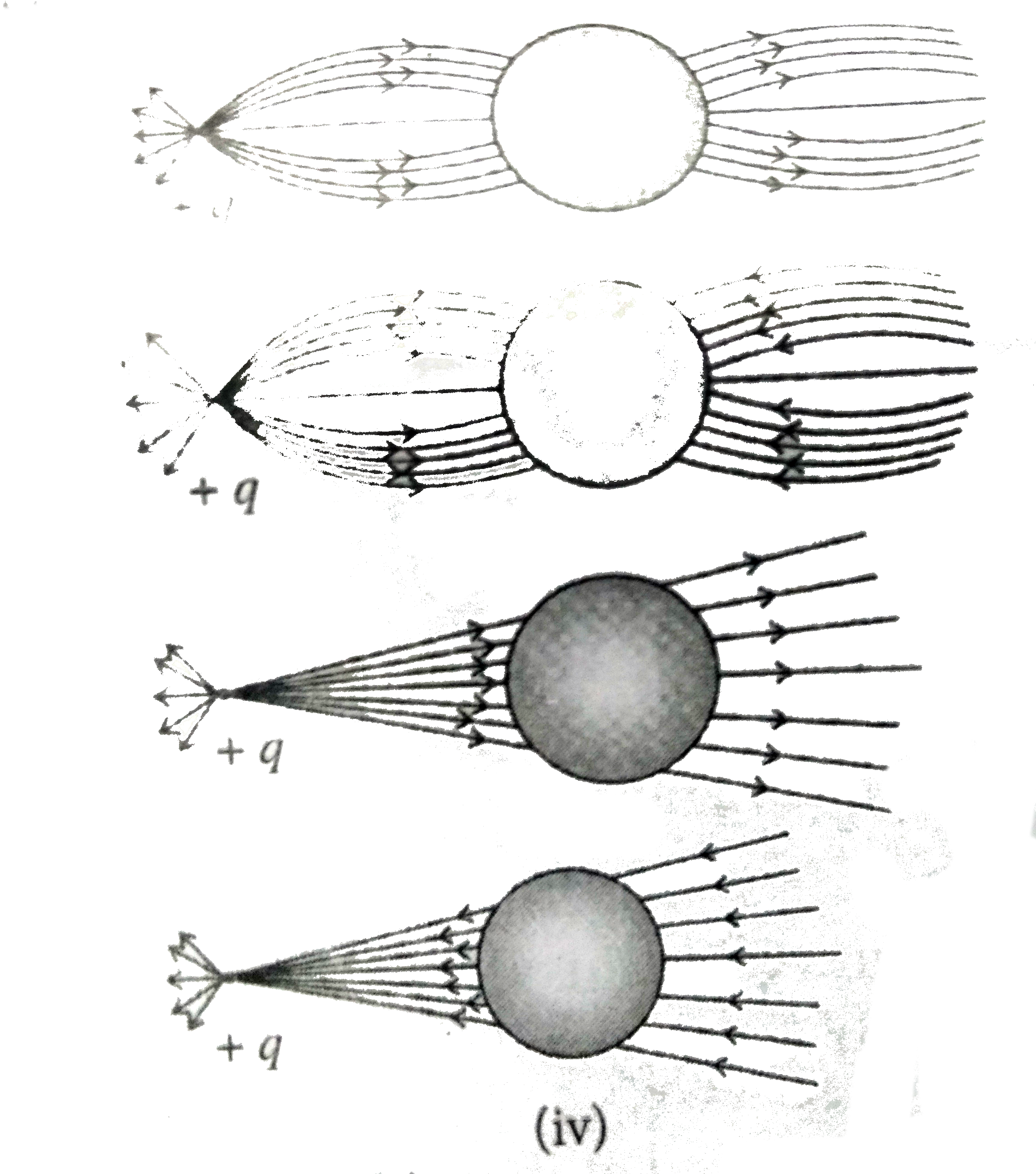A negatively charged ebonite rod is made to touch an insulated brass sphere. The brass sphere gets electrically charged by the process of Induction/ conduction
To solve the question regarding how the brass sphere gets electrically charged when a negatively charged ebonite rod touches it, we will analyze the concepts of conduction and induction.
1. Understanding the Charge of the Ebonite Rod:
- The ebonite rod is negatively charged. This means it has an excess of electrons.
2. Contact Between the Rod and the Sphere:
- The question states that the ebonite rod is made to touch the insulated brass sphere. This is a crucial detail because it indicates a physical connection between the two objects.
3. Process of Conduction:
- When two objects come into direct contact, charge can transfer from one object to another. This process is known as conduction. In this case, the excess electrons from the negatively charged ebonite rod will move to the brass sphere.
4. Charging of the Brass Sphere:
- As the negatively charged ebonite rod touches the brass sphere, electrons flow from the rod to the sphere. This results in the brass sphere becoming negatively charged as well, since it gains additional electrons.
5. Conclusion:
- Since the ebonite rod and the brass sphere are in contact, the charging of the brass sphere occurs through conduction, not induction. Induction would involve the influence of the charged rod on the sphere without direct contact.
Final Answer:
The brass sphere gets electrically charged by the process of conduction.
---
- The ebonite rod is negatively charged. This means it has an excess of electrons.
- The question states that the ebonite rod is made to touch the insulated brass sphere. This is a crucial detail because it indicates a physical connection between the two objects.
- When two objects come into direct contact, charge can transfer from one object to another. This process is known as conduction. In this case, the excess electrons from the negatively charged ebonite rod will move to the brass sphere.
- As the negatively charged ebonite rod touches the brass sphere, electrons flow from the rod to the sphere. This results in the brass sphere becoming negatively charged as well, since it gains additional electrons.
- Since the ebonite rod and the brass sphere are in contact, the charging of the brass sphere occurs through conduction, not induction. Induction would involve the influence of the charged rod on the sphere without direct contact.
The brass sphere gets electrically charged by the process of conduction.
Similar Questions
When a negatively charged ebonite rod is brought near a negatively charged and freely suspended ball, then the ball :
View SolutionA positively charged ball is brought close to a neutral conducting isolated sphere. The isolated sphere is grounded for an instant and then the ground connection is removed.Consider the followingstatements .
STATEMENT-1: The sphere will acquire a negative charge after this process.
and
STATEMENT-2 : If the sphere is kept grounded and positively charged ball is moved away, the sphere will again become neutral.View Solution
Knowledge Check
- Question 1 - Select One
Two spheres of radius a and b respectively are charged and joined by a wire. The ratio of electric field of the spheres is
AabBbaCa2b2Db2a2
When a negatively charged ebonite rod is brought close to an uncharged electroscope, the leaves of the electroscope develop positive charge and diverge.
View SolutionA point positive charge is brought near an isolated conducting sphere as shown in figure the electric field is best given by
 View Solution
View SolutionA point positive charge is brought near an isolated conducting sphere. The electric field is best given by
 View Solution
View SolutionA point positive charge is brought near an isolated conducting sphere as shown in figure the electric field is best given by
 View Solution
View SolutionTwo identical conduction spheres, one having an initial charge +Q and the other initially uncharged, are brought into contact.
(a) What is the new charge on each sphere?
(b) While the spheres are in contact, a positively chaged rod is moved close to one sphere, causing a redistribution of hte charges on the two spheres so the charge on hte sphere closest to the rod has a charge-Q. What is the charge to the other sphere?View SolutionThe net charge given to an isolated conducting solid sphere :
View SolutionConsider two concentric conducting spheres. The outer sphere is hollow and initially has a charge −7Q on it. The inner sphere is solid and has a charge +2Q on it.
a. How much charge is on the outer surface and inner surface of the outer sphere.
b. If a wire is connected between the inner and outer sphere, after electrostatic equilibrium is established how much total charge is on the outer sphere? How much charge is on the outer surface and inner surface of the outer sphere? Does the electric field at the surface of the inside sphere change when the wire is connected?
c. We return to original condition in (a). We now connect the outer sphere to ground with a wire and then disconnect it. How much total charge will be on the outer sphere? How much charge will be on the inner surface and outer surface of the outer sphere?View Solution

